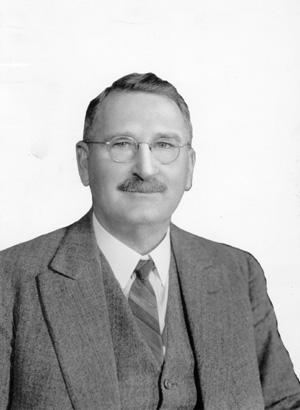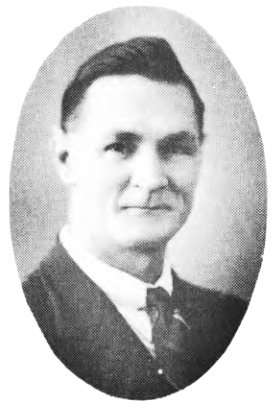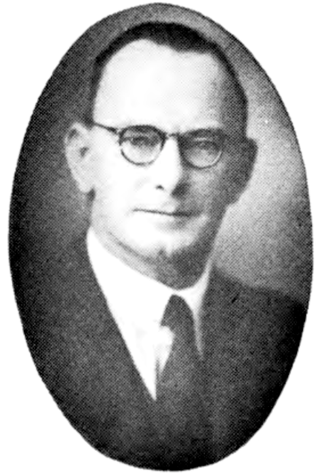Related Research Articles

The premier of Western Australia is the head of government of the state of Western Australia. The role of premier at a state level is similar to the role of the prime minister of Australia at a federal level. The premier leads the executive branch of the Government of Western Australia and is accountable to the Parliament of Western Australia. The premier is appointed by the governor of Western Australia. By convention, the governor appoints as premier whoever has the support of the majority of the Western Australian Legislative Assembly. In practice, this means that the premier is the leader of the political party or group of parties with a majority of seats in the Legislative Assembly. Since Western Australia achieved self-governance in 1890, there have been 31 premiers. Mark McGowan is the current premier, having been appointed to the position on 17 March 2017.
The Electoral district of Brown Hill-Ivanhoe was a Legislative Assembly electorate in the state of Western Australia. It covered part of the Goldfields city of Boulder, near Kalgoorlie, and neighbouring mining areas. It was created at the 1911 redistribution out of the former seats of Brown Hill and Ivanhoe, and was first contested at the 1911 election. It was abolished in the 1948 redistribution, with its area split between the neighbouring electorates of Boulder and Hannans, taking effect from the 1950 election. The seat was a very safe one for the Labor Party.

Albert Redvers George Hawke was the 18th Premier of Western Australia. He served from 23 February 1953 to 2 April 1959, and represented the Labor Party.

Philip Collier was an Australian politician who served as the 14th Premier of Western Australia from 1924 to 1930 and from 1933 to 1936. He was leader of the Labor Party from 1917 to 1936, and is Western Australia's longest-serving premier from that party.

John Collings Willcock was the 15th Premier of Western Australia, serving from 1936 until 1945. He was a member of the Australian Labor Party.

Edmund Harry Gray was an Australian trade unionist and politician who was a Labor Party member of the Legislative Council of Western Australia from 1923 to 1952, representing West Province. He served as a minister in the governments of John Willcock and Frank Wise.
The Wise Ministry was the 20th Ministry of the Government of Western Australia. It succeeded the Willcock Ministry on 3 August 1945 and was led by Labor Premier Frank Wise, who had previously been Minister for Lands and Agriculture. All of the Ministers continued from the previous Ministry, although in several cases with new or altered responsibilities. The Wise Ministry was succeeded by the McLarty–Watts Ministry on 1 April 1947 after Labor were defeated in the 1947 election.
The Barnett Ministry was the 35th Ministry of the Government of Western Australia. It included 13 members of the Liberal Party, three members of the National Party and an independent. It was led by the Premier of Western Australia, Colin Barnett, and Deputy Premier Liza Harvey. It succeeded the Carpenter Ministry on 23 September 2008 following the 2008 election and was succeeded by the First McGowan Ministry following the Liberal Party's defeat at the 2017 election.
The Lawrence Ministry was the 31st Ministry of the Government of Western Australia, and was led by Labor Premier Dr Carmen Lawrence and her deputy Ian Taylor. It succeeded the Dowding Ministry on 18 February 1990, following the resignation of Peter Dowding six days earlier following an open letter signed by a majority of the 47-member Labor caucus. The ministry was in turn succeeded by the Court–Cowan Ministry on 16 February 1993 after the Labor Party lost government at the state election held on 6 February.
The Court–Cowan Ministry was the 32nd Ministry of the Government of Western Australia, and was led by Liberal Premier Richard Court and his deputy, the Nationals' Hendy Cowan. It succeeded the Lawrence Ministry on 16 February 1993, following the defeat of the Labor government at the 1993 election ten days earlier. The Ministry was reconstituted on 9 January 1997 following the December 1996 election, due in part to the retirement and resignation of several ministers—Richard Lewis, Kevin Minson, Roger Nicholls and Bob Wiese. The ministry was followed by the Gallop Ministry on 16 February 2001 after the Coalition lost government at the state election held on 16 February.

Elections were held in the state of Western Australia on 8 April 1933 to elect all 50 members to the Legislative Assembly. The one-term Nationalist-Country coalition government, led by Premier Sir James Mitchell, was defeated by the Labor Party, led by Opposition Leader Philip Collier.

The Second Collier Ministry was the 18th Ministry of the Government of Western Australia and was led by Labor Premier Philip Collier. It succeeded the Second Mitchell Ministry on 24 April 1933, following the defeat of the Nationalist government at the 1933 election on 8 April.
The Forgan Smith Ministry was a ministry of the Government of Queensland and was led by Labor Premier William Forgan Smith. It succeeded the Moore Ministry on 18 June 1932, seven days after Arthur Edward Moore's CPNP government was defeated at the 1932 state election. The ministry was followed by the Cooper Ministry on 16 September 1942 following Forgan Smith's retirement from politics.
Harold Millington was an Australian politician. He was a Labor Party member of the Parliament of Western Australia; as a member of the Legislative Council for North-East Province for six years from 1914, and as a member of the Legislative Assembly from 1924 to 1947, representing the electorates of Leederville (1924–1930) and Mount Hawthorn (1930–1947). He was a long-serving state minister in the governments of Philip Collier and John Willcock, and was Deputy Premier under Willcock.

Aubrey Augustus Michael Coverley was an Australian politician who was a Labor Party member of the Legislative Assembly of Western Australia from 1924 until his death, representing the seat of Kimberley. He served as a minister in the governments of John Willcock and Frank Wise.
Selby Walter Munsie was an Australian politician who was a Labor Party member of the Legislative Assembly of Western Australia from 1911 until his death, representing the seat of Hannans. He served as a minister in the governments of Philip Collier and John Willcock.
William Mortimer Marshall was an Australian politician who was a Labor Party member of the Legislative Assembly of Western Australia from 1921 until his death, representing the seat of Murchison. He served as a minister in the government of Frank Wise.
Emil Nulsen was an Australian politician who was a Labor Party member of the Legislative Assembly of Western Australia from 1932 to 1962. He served as a minister in the governments of John Willcock, Frank Wise, and Albert Hawke.

William Henry Kitson was an Australian politician who was a Labor Party member of the Legislative Council of Western Australia from 1924 to 1947. He was a minister in the governments of Philip Collier, John Willcock, and Frank Wise, and later served as Agent-General for Western Australia from 1947 until his death.
References
- Black, David; Bolton, Geoffrey (2001). Biographical Register of Members of the Parliament of Western Australia, Volume One, 1870–1930 (Revised ed.). Parliament House: Parliament of Western Australia. ISBN 0730738140.
- Hansard Indexes for 1936-1945, "Legislature of Western Australia"
- "Special". Western Australia Government Gazette. 27 August 1936. p. 1933:1936. Also 1938:462 (24 March 1938)